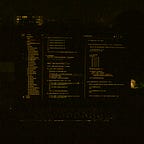Computer requires a well-defined problem description to process and provide well-defined acceptable solution.
To collect fragments of knowledge we need first to formulate a description in our spoken language and then represent it in formal language so that computer can understand.
The computer can then use an algorithm to compute an answer. This process is illustrated as,
The steps are:
- The informal formalism of the problem takes place first.
- It is then represented formally and the computer produces an output.
- This output can then be represented in an informally described solution that user understands or checks for consistency.
The Problem solving requires,
- Formal knowledge representation, and
- Conversion of informal knowledge to formal knowledge that is conversion of implicit knowledge to explicit knowledge.
Mapping between Facts and Representation
Knowledge is a collection of facts from some domain.
We need a representation of “facts” that can be manipulated by a program.
Normal English is insufficient, too hard currently for a computer program to draw inferences in natural languages.
Thus some symbolic representation is necessary.
